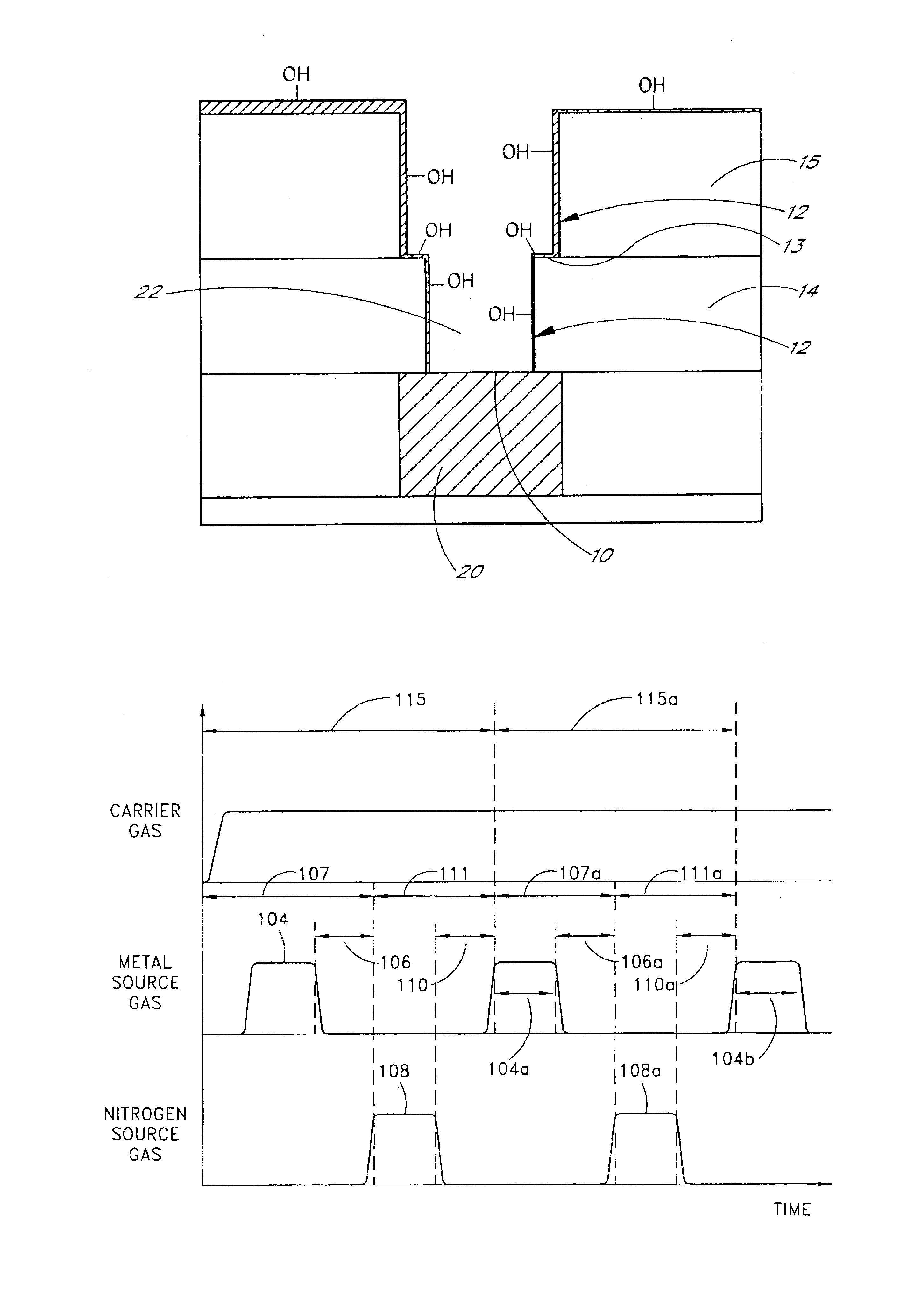Method for bottomless deposition of barrier layers in integrated circuit metallization schemes
a technology of integrated circuits and barrier layers, which is applied in the direction of crystal growth process, crystal growth process, semiconductor/solid-state device details, etc., can solve the problems of negative impact on reliability and signal delay, negative impact on reliability and resistivity of conductive paths, and additional implementation difficulties, so as to avoid the deposition of barrier layers
- Summary
- Abstract
- Description
- Claims
- Application Information
AI Technical Summary
Benefits of technology
Problems solved by technology
Method used
Image
Examples
Embodiment Construction
Methods for depositing a layer, preferably a barrier layer, on a substrate are described herein. The substrate includes at least a first surface and a second surface, which differ in material composition. The method preferably includes conditioning at least one of the surfaces to form ligands on the conditioned surface and thereafter depositing a barrier layer on the conditioned surface while avoiding deposition on the non-conditioned surface. Conditioning, as used herein, prepares the surface for further deposition, and in the illustrated embodiment involves making the surface susceptible to an atomic layer deposition (ALD) process to form the desired barrier layer. In contrast, the non-conditioned surface is substantially insensitive to the ALD process for the desired barrier layer. The “non-conditioned” surface can be achieved by failure to condition this surface or by further modification of conditioning on this surface.
While illustrated in the context of selective barrier depos...
PUM
| Property | Measurement | Unit |
|---|---|---|
| temperature | aaaaa | aaaaa |
| temperature | aaaaa | aaaaa |
| Pressure | aaaaa | aaaaa |
Abstract
Description
Claims
Application Information
 Login to View More
Login to View More - R&D
- Intellectual Property
- Life Sciences
- Materials
- Tech Scout
- Unparalleled Data Quality
- Higher Quality Content
- 60% Fewer Hallucinations
Browse by: Latest US Patents, China's latest patents, Technical Efficacy Thesaurus, Application Domain, Technology Topic, Popular Technical Reports.
© 2025 PatSnap. All rights reserved.Legal|Privacy policy|Modern Slavery Act Transparency Statement|Sitemap|About US| Contact US: help@patsnap.com



